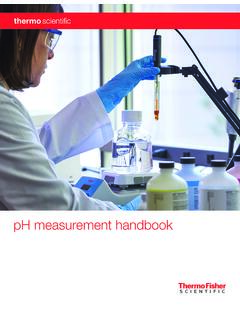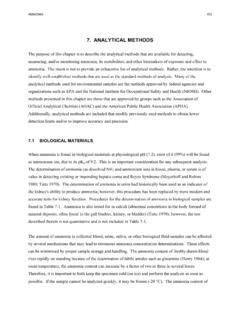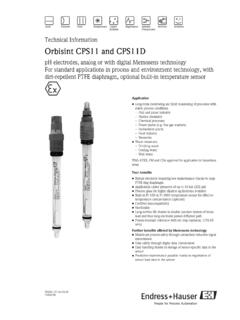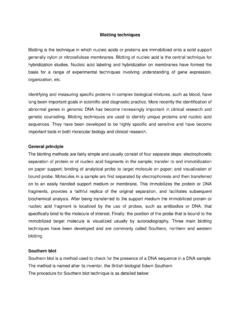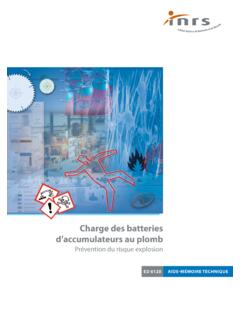Transcription of Understanding and Interpreting Serum Protein ...
1 See page 27 for levels-of-evidence definitions. Serum Protein electrophoresis is a lab-oratory examination that commonly is used to identify patients with mul-tiple myeloma and other disorders of Serum Protein . Many subspecialists include Serum Protein electrophoresis screening in the initial evaluation for numerous clinical conditions. Sometimes, however, the results of this examination can be confusing or dif-ficult to article provides a comprehensive review of Serum Protein electrophoresis, in- cluding a discussion of how the examination is performed, what it measures, and when it is indicated. The article also provides a sim-ple guide to result interpretation and sugges-tions on follow-up of abnormal is a method of separating proteins based on their physical proper-ties.
2 Serum is placed on a spe-cific medium, and a charge is applied. The net charge (posi-tive or negative) and the size and shape of the Protein com-monly are used in differentiat-ing various Serum subsets of Serum Protein electro-phoresis are available. The names of these subsets are based on the method that is used to separate and differentiate the various Serum components. In zone electrophoresis, for example, different Protein subtypes are placed in separate physical locations on a gel made from agar, cellulose, or other plant ,3 The proteins are stained, and their densities are calculated electronically to provide graphical data on the absolute and relative amounts of the various proteins. Further separation of Protein subtypes is achieved by staining with an immunologi-cally active agent, which results in immuno-f luorescence and of Serum Protein ElectrophoresisThe pattern of Serum Protein electrophore-sis results depends on the fractions of two major types of Protein : albumin and globu-lins.
3 Albumin, the major Protein component of Serum , is produced by the liver under normal physiologic conditions. Globulins comprise a much smaller fraction of the total Serum Protein content. The subsets of these proteins and their relative quantity are Serum Protein electrophoresis is used to identify patients with multiple myeloma and other Serum Protein disorders. Electrophoresis separates proteins based on their physical proper-ties, and the subsets of these proteins are used in Interpreting the results. Plasma Protein levels display reasonably predictable changes in response to acute inflammation, malignancy, trauma, necrosis, infarction, burns, and chemical injury. A homogeneous spike-like peak in a focal region of the gamma-globulin zone indicates a monoclonal gammopathy.
4 Monoclonal gammopathies are associated with a clonal process that is malignant or potentially malignant, including mul-tiple myeloma, Waldenstr m s macroglobulinemia, solitary plasmacytoma, smoldering multiple myeloma, monoclonal gammopathy of undetermined significance, plasma cell leukemia, heavy chain disease, and amyloidosis. The quantity of M Protein , the results of bone marrow biopsy, and other characteristics can help differentiate multiple myeloma from the other causes of monoclonal gammopathy. In contrast, polyclonal gammopathies may be caused by any reac-tive or inflammatory process. (Am Fam Physician 2005;71:105-12. Copyright 2005 American Academy of Family Physicians.) Understanding and Interpreting Serum Protein ElectrophoresisTHEODORE X. O CONNELL, , TIMOTHY J.
5 HORITA, , and BARSAM KASRAVI, Permanente Woodland Hills Family Medicine Residency Program, Woodland Hills, CaliforniaJanuary 1, 2005 Volume 71, Number 1 American Family Physician 105 The pattern of Serum pro-tein electrophoresis results depends on the fractions of two major types of Protein : albumin and from the American Family Physician Web site at Copyright 2005 American Academy of Family Physicians. For the private, noncommercial use of one individual user of the Web site. All other rights reserved. Contact for copyright questions and/or permission American Family Physician Volume 71, Number 1 January 1, 2005the primary focus of the interpretation of Serum Protein ,3 Albumin, the largest peak, lies closest to the positive electrode . The next five components (globulins) are labeled alpha1, alpha2, beta1, beta2, and gamma.
6 The peaks for these com-ponents lie toward the negative electrode , with the gamma peak being closest to that elec-trode. Figure 1 shows a typical normal pattern for the distribution of proteins as determined by Serum Protein albumin band represents the largest Protein component of human Serum . The albumin level is decreased under circum-stances in which there is less production of the Protein by the liver or in which there is increased loss or degradation of this Protein . Malnutrition, significant liver disease, renal loss ( , in nephrotic syn-drome), hormone therapy, and pregnancy may account for a low albumin level. Burns also may result in a low albumin level. Levels of albumin are increased in patients with a relative reduction in Serum water ( , dehydration).
7 ALPHA FRACTIONM oving toward the negative portion of the gel ( , the negative electrode ), the next peaks involve the alpha1 and alpha2 compo-nents. The alpha1- Protein fraction is com-prised of alpha1-antitrypsin, thyroid-binding globulin, and transcortin. Malignancy and acute inf lammation (resulting from acute-phase reactants) can increase the alpha1- Protein band. A decreased alpha1- Protein band may occur because of alpha1-anti-trypsin deficiency or decreased production of the globulin as a result of liver disease. Ceruloplasmin, alpha2-macroglobulin, and haptoglobin contribute to the alpha2- Protein band. The alpha2 component is increased as an acute-phase FRACTIONThe beta fraction has two peaks labeled beta1 and beta2.
8 Beta1 is composed mostly of transferrin, and beta2 contains beta-lipo- Protein . IgA, IgM, and sometimes IgG, along with complement proteins, also can be iden-tified in the beta 1. Typical normal pattern for Serum Protein 1 Indications for Serum Protein ElectrophoresisSuspected multiple myeloma, Waldenstr m s macroglobulinemia, primary amyloidosis, or related disorderUnexplained peripheral neuropathy (not attributed to longstanding diabetes mellitus, toxin exposure, chemotherapy, etc.)New-onset anemia associated with renal failure or insufficiency and bone painBack pain in which multiple myeloma is suspectedHypercalcemia attributed to possible malignancy ( , associated weight loss, fatigue, bone pain, abnormal bleeding)Rouleaux formations noted on peripheral blood smearRenal insufficiency with associated Serum Protein elevationUnexplained pathologic fracture or lytic lesion identified on radiographBence Jones proteinuriaInformation from references 2 through 1, 2005 Volume 71, Number 1 American Family Physician 107 GAMMA FRACTIONMuch of the clinical interest is focused on the gamma region of the Serum Protein spec-trum because immunoglobulins migrate to this region.
9 It should be noted that immuno-globulins often can be found throughout the electrophoretic spectrum. C-reactive Protein (CRP) is located in the area between the beta and gamma Protein electrophoresis commonly is performed when multiple myeloma is suspected. The examination also should be considered in other red f lag situations (Table 1).2-4If the examination is normal but multiple myeloma, Waldenstr m s macroglobulinemia, primary amyloidosis, or a related disorder still is suspected, immunofixation also should be performed because this technique may be more sensitive in identifying a small monoclo-nal (M) Interpretation of ResultsPlasma Protein levels display reasonably pre-dictable changes in response to acute inf lam-mation, malignancy, trauma, necrosis, infarction, burns, and chemical injury.
10 This so-called acute-reaction Protein pattern involves increases in fibrinogen, alpha1-anti-trypsin, haptoglobin, cerulo-plasmin, CRP, the C3 portion of complement, and alpha1-acid glycoprotein. Often, there are associated decreases in the albumin and transferrin Table 26 lists characteristic Serum Protein electro-phoresis commonly is performed when multiple myeloma is 2 Characteristic Patterns of Acute-Reaction Proteins Found on Serum Protein Electrophoresis and Associated Conditions or DisordersIncreased albuminDehydrationDecreased albuminChronic cachectic or wasting diseasesChronic infectionsHemorrhage, burns, or Protein -losing enteropathiesImpaired liver function resulting from decreased synthesis of albumin MalnutritionNephrotic syndromePregnancyIncreased alpha1 globulinsPregnancyDecreased alpha1 globulinsAlpha1-antitrypsin deficiencyIncreased alpha2 globulinsAdrenal insufficiencyAdrenocorticosteroid therapyAdvanced diabetes mellitusNephrotic syndromeDecreased alpha2 globulinsMalnutritionMegaloblastic anemiaProtein-losing enteropathiesSevere liver diseaseWilson s diseaseIncreased beta1 or beta2 globulinsBiliary cirrhosisCarcinoma (sometimes)Cushing s diseaseDiabetes mellitus (some cases)










